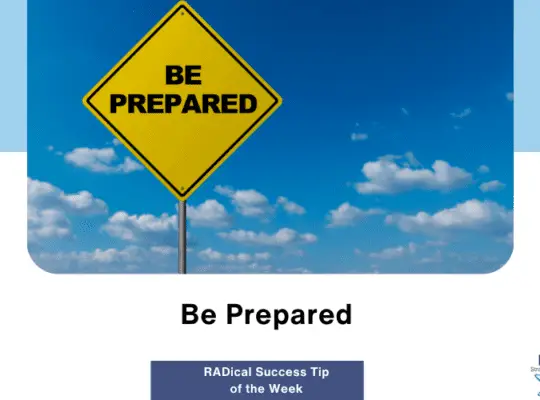“The single biggest problem in communication is the illusion that it has taken place.” — George Bernard Shaw
Effective communication is at the heart of every successful leader’s toolkit. Yet, how often have you left a meeting thinking your team is fully aligned, only to discover later that your message was misunderstood? Miscommunication can lead to delays, frustration, and missed opportunities. But by improving our communication skills, we can build stronger relationships, improve team alignment, and achieve better results.
In this blog, we’ll explore three essential strategies for mastering communication as a leader. These tips are designed to help you convey your ideas more effectively, ensure your message is received, and create a more connected, productive team.
1. Clarity: Say What You Mean, and Mean What You Say
Clear communication begins with clarity. In leadership, it’s easy to assume that others understand our expectations simply because we’ve said them out loud. But assumptions lead to confusion. Ensuring clarity in your messaging requires that you speak with purpose and specificity.
Tips for Clear Communication:
- Use Simple Language: Avoid jargon or overly technical language unless it’s necessary for understanding. Keep your sentences short and straightforward.
- Be Specific: Replace vague instructions like “as soon as possible” or “when you have time” with concrete timelines. For example, say “by Friday at 3 PM.”
- Summarize Key Points: After explaining a complex idea, recap the main points. This reinforces your message and ensures everyone is on the same page.
Real-World Example: Think about leaders like Jeff Bezos, who emphasize the importance of clarity. At Amazon, Bezos implemented a practice of requiring six-page narratives for meetings to avoid any ambiguity. This approach ensures that every decision, idea, and strategy is clearly communicated and fully understood.
Clarity in communication helps your team to understand not only what they need to do but also why it matters. When people are clear on their role and the expectations, they feel empowered to deliver.
2. Active Listening: Communication Is a Two-Way Street
Effective communication isn’t just about speaking—it’s about listening as well. Active listening allows you to better understand your team’s needs, concerns, and ideas. When you listen carefully, you gain insights that can lead to more informed decisions, stronger team morale, and a more collaborative environment.
How to Practice Active Listening:
- Listen Without Interrupting: Let your team members finish their thoughts before responding. This shows respect and allows you to hear the entire message.
- Ask Open-Ended Questions: Encourage dialogue by asking questions like, “What are your thoughts on this approach?” or “How do you think we can solve this issue?”
- Paraphrase for Understanding: Repeat back what you’ve heard in your own words. For example, “So you’re saying that the timeline feels too tight for your team—do I have that right?”
Personal Insight: When leading my own team, I’ve found that active listening not only builds trust but also reveals valuable insights into team dynamics and individual strengths. By listening to their feedback and addressing their concerns, I am better able to make decisions that benefit the entire team.
Active listening is one of the simplest ways to show your team that you value their input. By understanding their perspectives, you can create a more collaborative and engaged workplace.
3. Consistency: Ensure Your Message Is Aligned Across All Channels
Inconsistent messaging is a common source of confusion. When your communication varies across different channels—like emails, meetings, and one-on-one conversations—your team can become uncertain about priorities, expectations, or goals. Consistency in communication builds trust and provides a clear sense of direction.
Strategies for Consistent Communication:
- Set Core Messages: Identify the key messages that need to be reinforced across all communication channels. These messages should be clear, concise, and aligned with your organization’s goals.
- Use Multiple Channels: Share important updates through various channels, such as emails, team meetings, and project management tools, to ensure everyone receives the message.
- Follow Up: After key discussions, send a recap or summary to reiterate the main points and action items. This not only provides clarity but also allows team members to refer back to the information.
Example: Think of companies like Microsoft, where CEO Satya Nadella champions clear, consistent communication that resonates from the executive level down to every team. His consistent messaging about Microsoft’s mission to “empower every person and organization on the planet to achieve more” has aligned the company’s efforts across the board.
When you communicate consistently, you reinforce your team’s understanding and build a stronger, more unified culture. Your team will appreciate the clarity and feel more confident in their tasks.
Communication Challenges: Addressing Difficult Conversations
Clear communication isn’t always easy, especially when it involves difficult conversations. As leaders, we occasionally need to address performance issues, provide constructive feedback, or discuss challenging changes within the organization. These conversations require not only clarity and empathy but also courage.
Here are some tips for handling difficult conversations with confidence:
- Be Honest and Direct: Avoid sugarcoating issues, but also communicate with empathy and understanding.
- Stay Calm: Approach the conversation with a calm, open demeanor. The goal is to resolve the issue, not to escalate emotions.
- Offer Solutions: Instead of focusing solely on the problem, suggest ways to move forward or offer support in overcoming challenges.
Remember, difficult conversations are an opportunity to strengthen your relationships. By handling them thoughtfully, you’ll build trust and demonstrate that you’re a leader who cares about your team’s growth.
Conclusion: Implementing These Communication Strategies for Lasting Success
Improving your communication skills can transform your effectiveness as a leader. When you speak with clarity, listen actively, and communicate consistently, you’ll create a more aligned, engaged, and productive team. Start by focusing on one area—whether it’s simplifying your messaging, practicing active listening, or ensuring consistency—and see the difference it makes.
Ready to take your communication skills to the next level? Watch the full video for a deeper dive into these strategies and practical examples of how to apply them in your daily interactions.
For more strategies on effective communication and leadership success, visit https://radstrategicpartners.youcanbook.me/
and book a call with me, Angie Dobransky, to learn how you can achieve RADical success!






